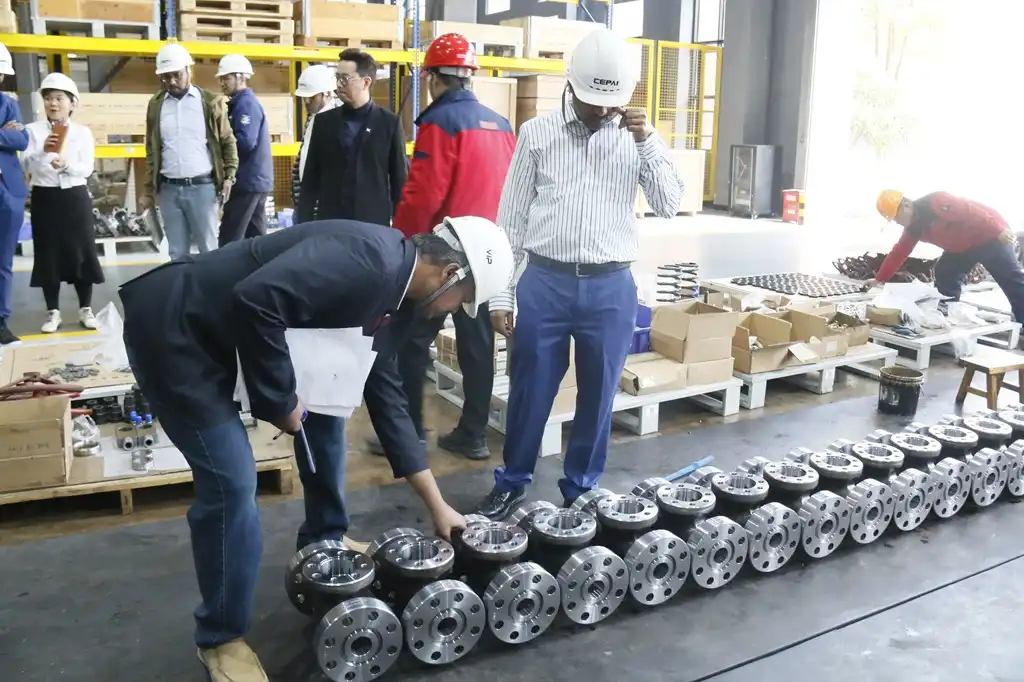Understanding Butterfly Valve Basics
Anatomy of a Butterfly Valve
Butterfly valves consist of several key components that work together to control fluid flow. The main parts include the valve body, disc, seat, stem, and actuator. The valve body houses the internal components and connects to the pipeline. The disc, typically circular, rotates to allow or restrict flow. The seat provides a seal when the valve is closed, while the stem connects the disc to the actuator. Actuators can be manual, pneumatic, or electric, depending on the application requirements.
Operating Principles
Butterfly valves operate on a simple yet effective principle. When open, the disc is parallel to the flow, allowing fluid to pass through with minimal resistance. As the valve closes, the disc rotates perpendicular to the flow, gradually restricting it. This quarter-turn operation makes butterfly valves quick and easy to operate. The disc's position can be adjusted to provide precise flow control, making these valves suitable for both on-off and throttling applications.
Advantages of Butterfly Valves
The extensive use of butterfly valves is due in large part to the many advantages they provide. They are perfect for installations with limited area due to their compact shape. Because of their low weight, they are easier to install and require less support than other valve types. With a minimal pressure drop when completely open, butterfly valves offer great flow characteristics. There are fewer moving parts because to their straightforward design, which means they are more reliable and require less maintenance. Also, for pipes with a big diameter, butterfly valves are an affordable option.
Types of Butterfly Valves and Their Characteristics
Concentric Butterfly Valves
Concentric butterfly valves, also known as resilient-seated valves, feature a centered disc that rotates around a fixed axis. The disc is typically made of metal and coated with a resilient material like EPDM or PTFE. Because of the tight seal they create when closed, concentric valves work well with low pressures. Numerous generation forms, counting HVAC frameworks and water decontamination offices, make broad utilize of them. Concentric valves are incredible for less requesting circumstances since they are cost-effective and give solid execution.
Double Eccentric Butterfly Valves
Double eccentric butterfly valves, or double offset valves, have two points of eccentricity. The first offset moves the stem away from the disc's centerline, while the second offset places the stem behind the sealing surface. With this design, sealing performance is improved and seat wear is reduced. The utilize of twofold unconventional valves is perfect in circumstances when the temperature and weight are direct. They have distant coming to application in the oil and gas, chemical planning, and control period sections. These valves final longer and have superior fixing properties than concentric sorts.
Triple Eccentric Butterfly Valves
A third offset is used to form a cone-shaped closure path in triple eccentric butterfly valves, which are also known as triple offset valves. Because there is no longer any friction between the disc and seat when the valve is operating, the wear on the valve is significantly reduced, and its lifespan is increased. Triple eccentric valves are ideal for high-pressure, high-temperature situations because of their excellent sealing performance. The petrochemical, power generating, and aerospace industries frequently use them in crucial processes. Triple eccentric valves offer unparalleled accuracy and dependability in harsh settings, but they are more costly than alternatives.
Applications and Industry-Specific Uses of Butterfly Valves
Water and Wastewater Treatment
Water and wastewater treatment plants rely heavily on butterfly valves. Their many applications include distribution systems, treatment tank separation, and flow control in pipes with big diameters. Concentric butterfly valves with resilient seats are often chosen for their corrosion resistance and ability to handle particulate-laden fluids. In desalination plants, butterfly valves control the flow of seawater and treated water. Their dependable functioning and minimal maintenance needs make them perfect for municipal water systems that prioritise long-term performance.
Oil and Gas Industry
For many different reasons, butterfly valves are indispensable in the oil and gas industry. Their primary function is to isolate and control the wellhead in upstream operations. Isolating pipelines and controlling flows in storage facilities are examples of midstream uses. Downstream, butterfly valves are found in refineries for process control and product distribution. Triple eccentric valves are often preferred in this industry due to their ability to withstand high pressures and temperatures. Hydrocarbon processing settings have very strict safety standards, thus fire-safe designs are very frequent.

Chemical Processing
Chemical processing plants utilize butterfly valves extensively due to their versatility and resistance to corrosive media. They find use in systems for storage tanks, product transfer lines, and isolating reactors. Double and triple eccentric designs are favored for their superior sealing capabilities when handling aggressive chemicals. Specialized materials like hastelloy or titanium are often used for valve construction to ensure compatibility with corrosive fluids. Coatings and linings designed specifically for butterfly valves in this sector can increase their durability and resistance to chemicals.
Conclusion
Today's fluid control systems can't work without butterfly valves because they are flexible, easy to use, and effective. There are different types of these valves, from simple circular ones to more complex ones with three eccentric parts. Their utility spans several different markets. They are great for many tech tasks because they are small, cheap, and simple to use. Butterfly valve designs are constantly evolving to satisfy the needs of complicated industrial processes and environmental requirements as technology improves.
Contact Us
For expert guidance on selecting the right butterfly valve for your specific application, contact CEPAI Group. Our team of specialists can provide tailored solutions to optimize your fluid control systems, ensuring improved efficiency and reliability. Reach out to us at cepai@cepai.com to discover how our high-quality valves can enhance your operations.


_1746598531170.webp)



